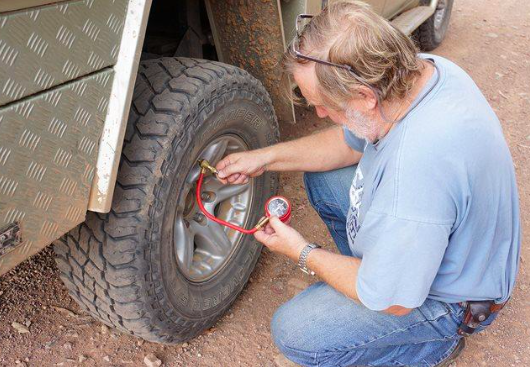How to Trade in a Car with a Loan in Phoenix
 If you need a new car, then you might be asking, “can you trade in a car with a loan?” You can still trade in a car with a loan, but you need to be aware of risks and make sure that you stay in control of the entire transaction.
If you need a new car, then you might be asking, “can you trade in a car with a loan?” You can still trade in a car with a loan, but you need to be aware of risks and make sure that you stay in control of the entire transaction.
There are two situations you’ll be dealing with when trading in a car that still has a loan or a car title loan in Phoenix, Arizona.
- Positive Equity
Things are looking good if the car is worth more than the amount left to pay on the loan. It means that you’re in a state of “positive equity,” which is basically like having some extra money that can be used to purchase the new car.
- Negative Equity
If the car is worth less than the loan balance, you’re in a negative equity situation. When you trade in a vehicle with negative equity, you’ll need to pay the difference between the trade-in value of the car and the remaining loan amount. You can pay it off with cash, with another loan, or by compounding what you owe into a new car loan.
Before we jump into how to trade in a car with a loan for both positive and negative equity, let’s look at the process of trading in a car.
How Does Trading in a Car with a Loan Work?
If you trade in your car when purchasing a new one, the value of your current car is taken off of the price of the new car. When trading in a vehicle that has a loan, the dealer takes ownership of the loan and pays it off. They are supposed to handle the paperwork too, taking care of things like the transfer of the title and establishing legal ownership of the car.
Here’s what you need for the dealership to trade in a car with a loan;
- Driver’s license
- Loan information such as the account number and payoff amount
- Vehicle registration
- Vehicle keys and remote keys
- Printout of the trade-in value
- Proof of insurance
Remember that the value of the trade-in car and the price of the new vehicle can both be negotiated. You should secure a reasonable interest rate on the new loan to get a good deal overall, as well as a fair price for the new and old car. Before going to the dealership, consider using a car loan calculator to understand what the costs may be and how much you can expect to pay for the new loan.
Payoff Amount and Trade-In Price
If you plan to trade in a car that you owe money on, then be sure to talk to your auto loan lender and find out how much your payoff amount is or your local car title loan company.
- Price the Car
Check the current trade-in value for the vehicle with a pricing guide. Many sites offer pricing data from the National Automobile Dealers Association to give you the latest information.
- Compare Values
Take the car value and subtract the payoff amount. Though you can negotiate a final trade-in price, it’s good to know if you have positive or negative equity before entering negotiations.
Trading in a Car with Positive Equity
If you have positive equity, then you can take the extra money and put it towards the purchase of the next car. Let’s say you have $5,000 left on your vehicle, but it’s worth $7,000 for a trade-in. That means you have $2,000 in equity you can put towards the purchase of the new car.
The equity is taken from the negotiated price of the new car. In addition to the equity applied to the next car purchase, you could also use the equity to make a down payment and reduce the overall cost of the loan.
Even with that equity, you’ll have to provide financing – whether through an auto loan or cash amount – for the remaining purchase of the car. The trade-in value is listed on the contract for the new vehicle. Make sure that the number on the contract is equal to how much you negotiated.
It’s worth taking your time to ensure you negotiate the individual prices for the trade-in value of the car and the cost of the new vehicle to get a great deal. Check the prices from the online guides and refer to them during the negotiation phase.
Trading in Cars with Negative Equity
If your car loan has negative equity, then you should consider holding off on making a purchase. Wait until you’ve finished paying off the car loan – or at least until you reach a state of positive equity. If you’re having difficulty keeping up with payments though, then trading in – even with negative equity – could be an excellent way to downsize and get a less expensive car with smaller payments. Keep in mind that you’ll still likely have to pay extra to cover the cost of the negative equity.
For example, let’s say you have $10,000 left to pay for your car, and it has a trade-in value of $9,000. That means you can purchase a $10,000 car with the $9,000 equity and $10,000 in cash or credit.
Be aware that your dealer will be more than happy to suggest that you roll the negative equity over into the loan for the new car. It is a convenient choice, sure, but it is unwise. It means that you start your new loan in negative equity automatically. Going this route also leaves you with a bigger loan that sees you paying more in interest than before.
If you need to get a new car but you don’t have the money to pay off the negative equity, and you aren’t able to keep up with your current payments then it could be worth taking the risk.
For example, it may be worth it if the new loan has a better interest rate than your current one. If you could downsize your car and purchase a cheaper one, then it could still be more affordable even if you roll your remaining debt over.
The Final Steps
After you finish negotiating the car deal and the trade in, be sure to read over the contract. Make sure the terms are what you agreed upon, and everything is in writing. Check all the numbers twice.
Wait a few weeks and see if the loan has been paid off. The lender should also send you documentation that the loan is settled so keep an eye on your mailbox too.









